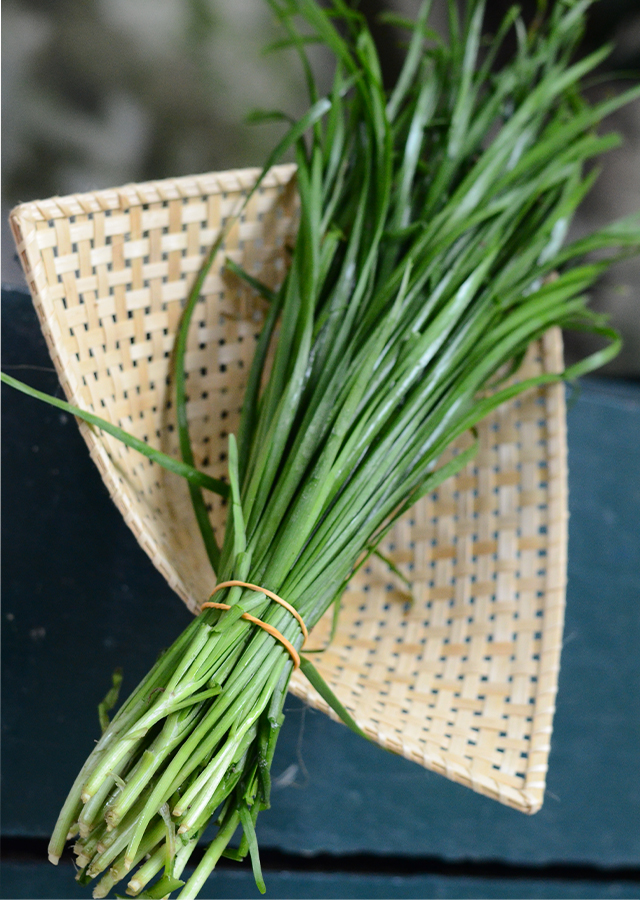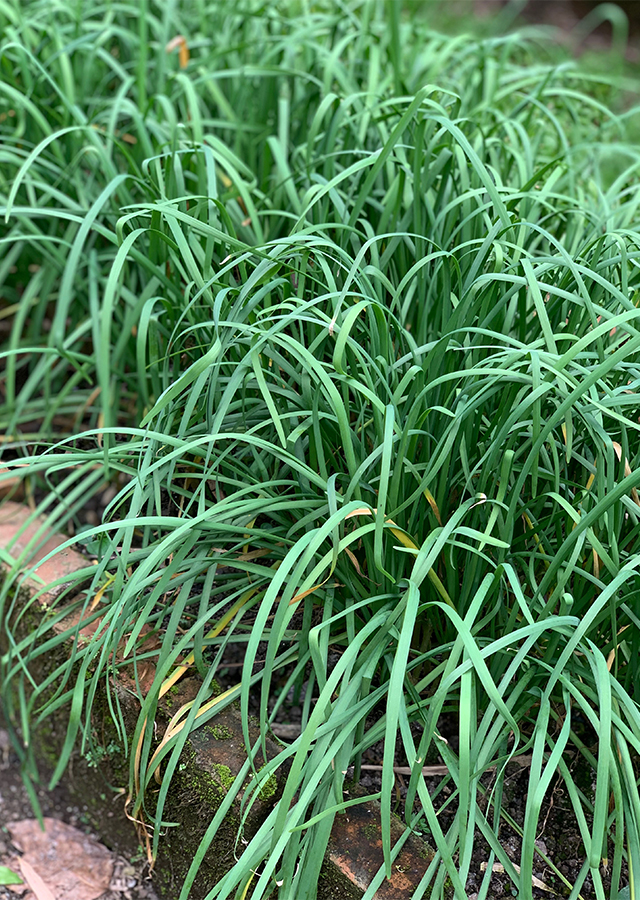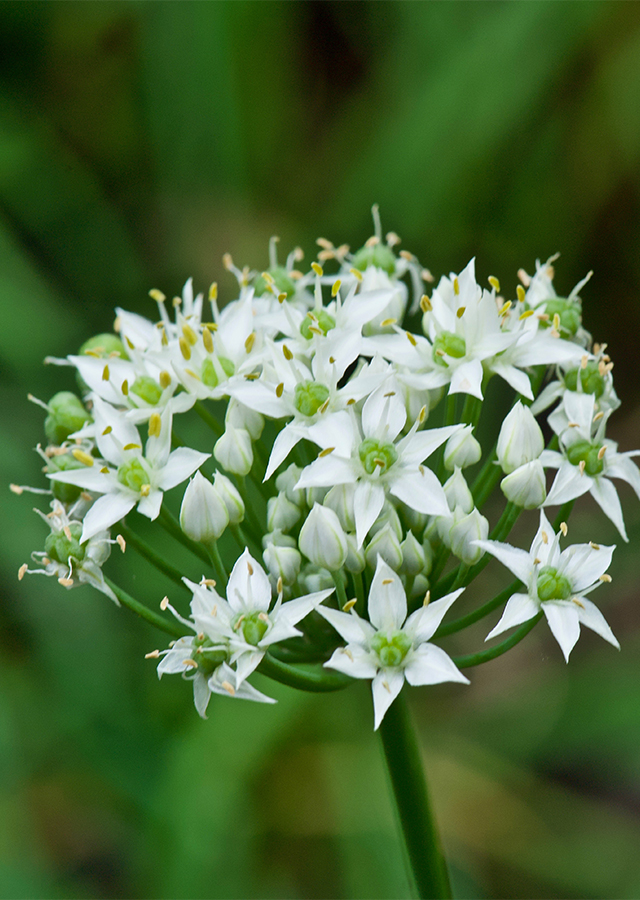Garlic Chives
Allium tuberosum Rottler ex Spreng.
Amaryllidaceae
Location in our garden
Principal



Synonym
Allium angulosum Lour.
Allium argyi H.Lev.
Allium chinense Maxim.
Habitus
Herbaceous. A perennial, forming dense clumps, grows up to 20 to 40 cm tall.
Part Used
Leaves
Seeds
The Whole Plant
Rhizome
Growing Requirements
Full Sunshine
Habitat
Terrestrial
Overview
Garlic chives are native to Assam, China North-Central, Nepal, West Himalaya. It is grown in China, India, Indonesia, Japan, Korea, Nepal, the Philippines, Taiwan, Thailand, and the United States. The plant is a common vegetable in Eastern Asia, where its edible leaves, bulbs, and flowering stems are often cultivated. Garlic chives have long been used as a culinary herb in Asia diets. Since it contains many new and known bioactive compounds, it has a great potential to be developed as value-added products in the food, cosmetic, and medicinal industries. Although no individual reports have been seen concerning this species, there have been cases of poisoning caused by the consumption of certain members of this genus, in very large quantities and by some mammals. Dogs seem to be especially vulnerable.
Vernacular Names
Ail civette de Chine (French), Maroi nakuppi (Manipur-India), Nira (Japanese), Buchu (Korean), Kutsay (Philippines), and Cebollino de la China (Spanish).
Agroecology
Garlic chives are effectively grown in temperate and tropical climates. High temperatures promote the formation of bulbs, but the formation of flowers and the production of seeds is only possible if the bulbs are exposed to low temperatures. It prefers a sunny position, growing best in rich, moist but well-drained soil, preferring a pH of 6 to 6.8.
Morphology
- Rhizome - a prominently spreading rhizome from which thick long persistent roots emerge.
- Bulbs - indistinct, narrowly ovoid, 15-20 mm × 15 mm, with several protective brown bulb-coat leaves broken up into netted fibres.
- Leaves - foliage 4-9, distichous, linear, 13-45 cm × 2-10 mm, flat above, slightly keeled below, not folded lengthwise, suberect or curved.
- Flowers - white, widely opened, star-like, slightly fragrant; in a round cluster (umbel) on stalks.
- Fruits - obovoid, 5-6 mm long and wide.
- Seeds - irregularly depressed globose, 3-4 mm long, black.
Cultivation
Outside the tropics, it is propagated by seed and in the tropics. It can also be propagated vegetatively by the division of clumps.
Chemical Constituents
Leaves: sulfides, linalool, saponins, and flavonoid glycosides. Seeds: steroidal glycosides, saponins, daucosterol, adenosine, thymidine. Roots: spirostanol saponins (tuberosine A, B, dan C), pyrazines. The plant: produces 37 essential oils as well.
Traditional Medicinal Uses
- The whole plant is antibacterial, cardiac, depurative, digestive, stimulant, stomachic, and tonic. It is an anti-emetic herb that improves kidney function.
- It is used for the management of asthma, diarrhea, stomach pain, nocturnal emission, diabetes, poisonous bite antidote, improving good digestion and immune system, can cure anemia through hemorrhage control and also treat fatigue, effective against intestinal parasites.
- Decoction of the whole plant is used for curing various liver disorders, gastrointestinal disorders, helps in lessening blood glucose and serum cholesterol level. Plant juice acts as a moth repellent.
- This plant also has an anticoagulant effect. Excessive bleeding can be controlled by the plant juice, bulbs contain vulnerable properties.
- Seeds are used for treating kidney, liver and digestive system problems.
- The poultice of the whole plant is used to treat fever.
- For toothache, the plant seeds are largely used as an antiseptic mouthwash.
Part Used
Reference Sources
- Zhang, D.B. & Wei, X.Y. (2020). Steroidal glycosides from Allium tuberosum seeds and their roles in promoting testosterone production of rat leydig cells. Molecules 25(5464): 1-14.
- Mangkasa, M.Y., Rorong, J.A. & Wuntu, A.D. (2018). Uji fitokimia dan aktivitas antioksidan dari ekstrak daun bawang kucai (Allium tuberosum Rottl. ex Spreng) menggunakan spektrofotometer uv-vis. PHARMACON Jurnal Ilmiah Farmasi–UNSRAT 7(4): 12-22.
- Lawthienchai, N., Asavasanti, S., Tongprasan, T. & Yasurin, P. (2016). Chemical Profile and Bioactivity of Chinese Chives (Allium tuberosum Rottl. Ex Spreng) Crude Extracts under Different Solvent Extractions. International Journal of Advanced Biotechnology and Research (IJBR) 7(4): 2209-2221.

